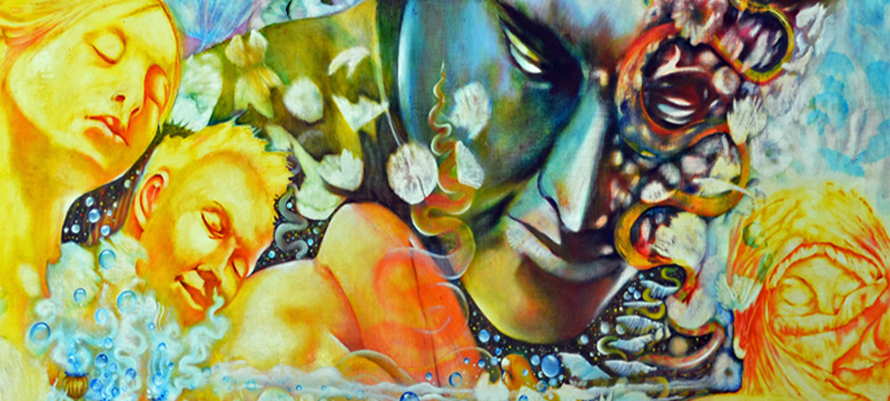
Sabbat or Dark Interpreter
Sabbat or Dark Interpreter, De Quincy Dreams of Levana and Our Ladies of Sorrow.
Oil on wood, 48 inches by 48 inches, 2016. Buy Original Painting from Saatchi Art
Sabbat, first public showing at MCPA’s Modern Pagans/Ancient Realms show at the Vine Arts Centre, Minneapolis, MN, June 2016

Since the Middle Ages, until comparatively recently, a conjecture of public opinion held that visits of witches and warlocks to the Sabbat were a physical experience.
In recent times, this view has, by many, been transformed into a concept that attendance at the Sabbat is induced by hallucinogenic substances, ingredients often absorbed through the skin from the well-known “flying ointment”.
See Sacred Mushroom and the Cross by John M. Allegro for an illustration of this phenomenon in Christian religious experience.
The De Quincy connection provides another example of altered state religious experience induced by a mind-altering substance, leading to derangement of the senses.
Thomas De Quincy’s book, Confessions of an English Opium Eater, is a detailed account of the day-to-day life of an early 19th-century laudanum addict written in chronological style.
However, in the chapter Levana and our Ladies of Sorrow, we find a dramatic textual shift into a gnomic style that attempts to depict an alien phantasmagoric world.
For DeQuincy, his soul guide into this realm is the Dark Interpreter, a symbolic representation of the substance of psychedelic revelations.
In this world, individuality is flayed away, exposing the raw primal soul integrated into the infinite.
Featured in Gallery Paintings
If you like this, see Dream Gate of the Pleasure Dome
